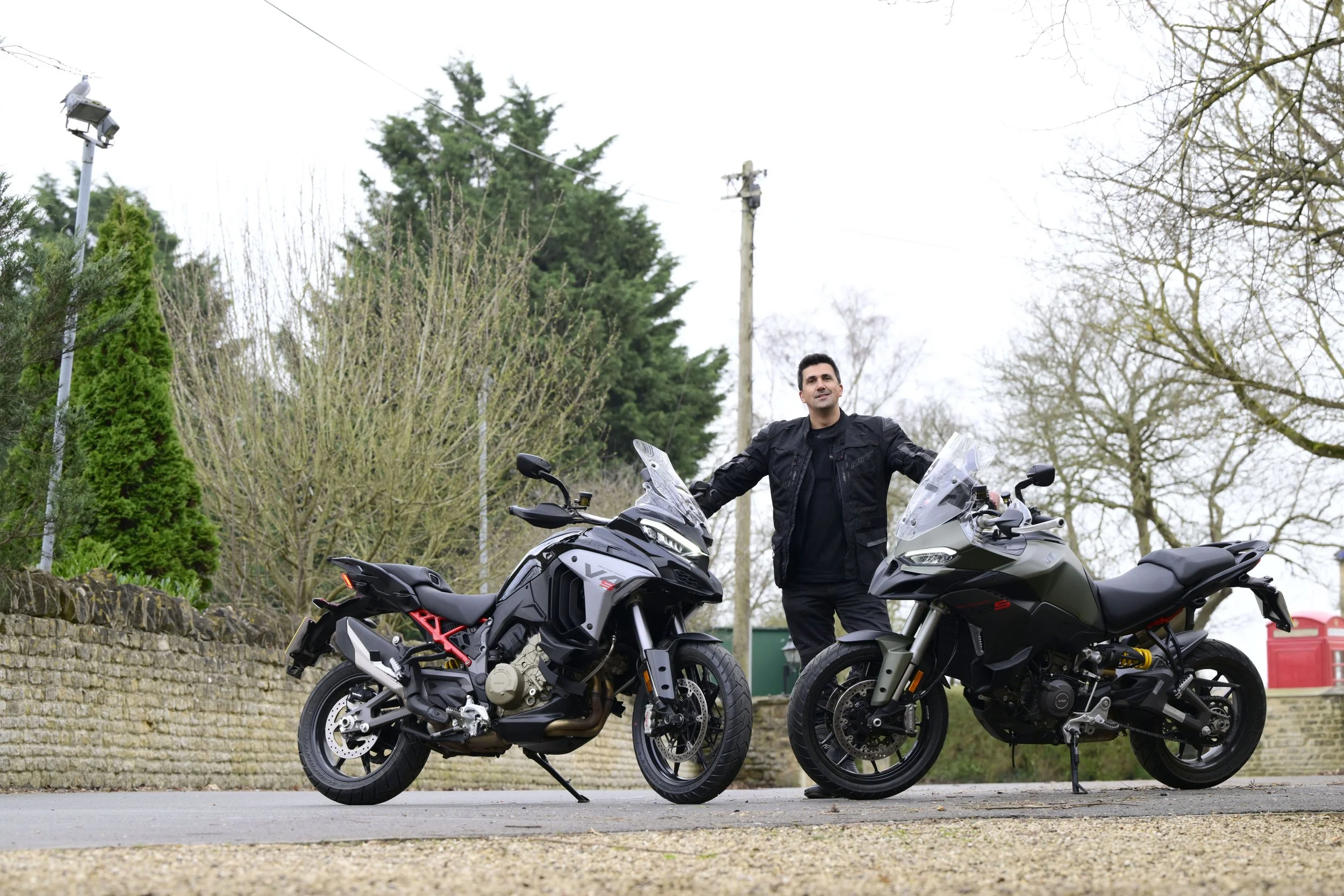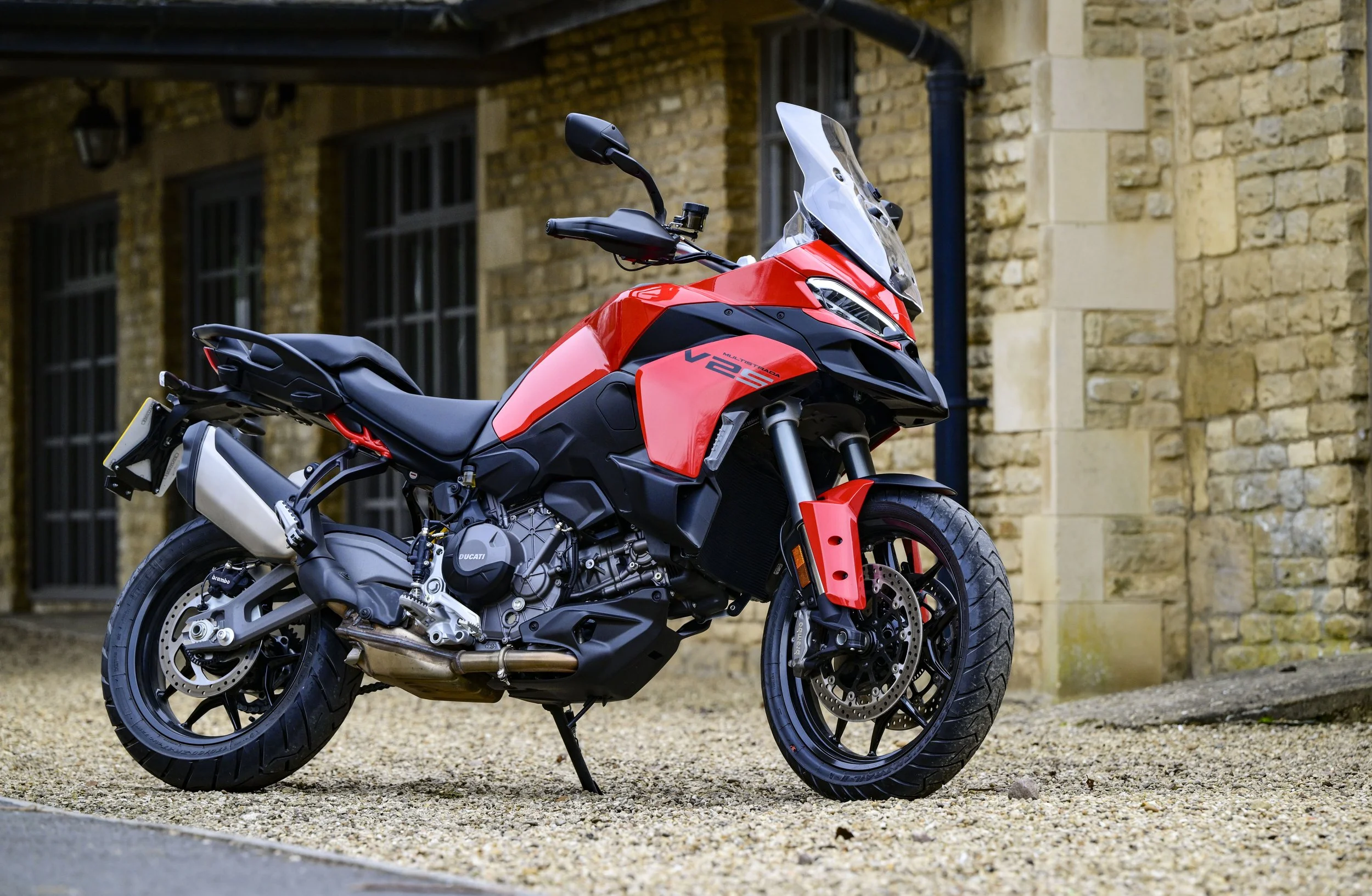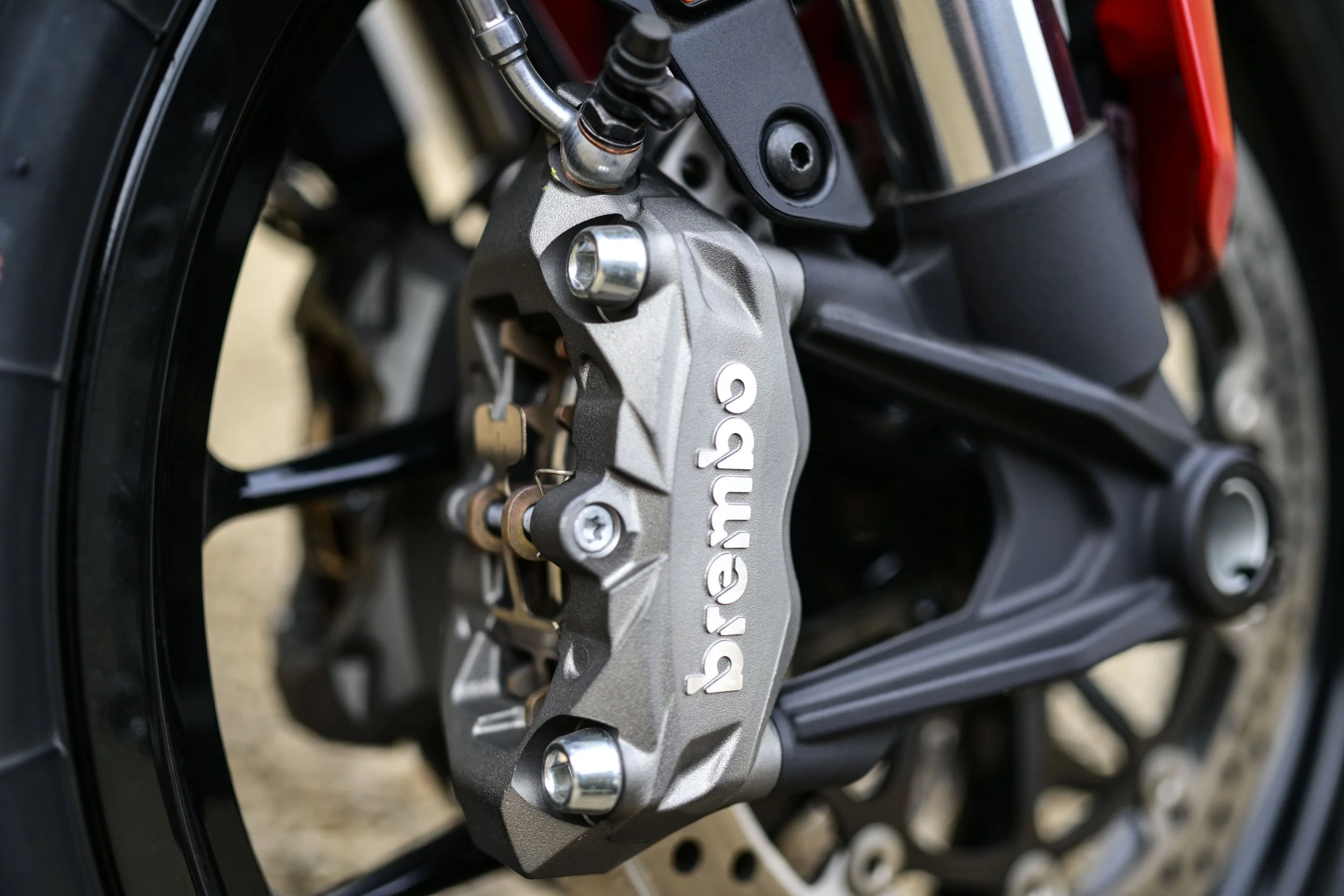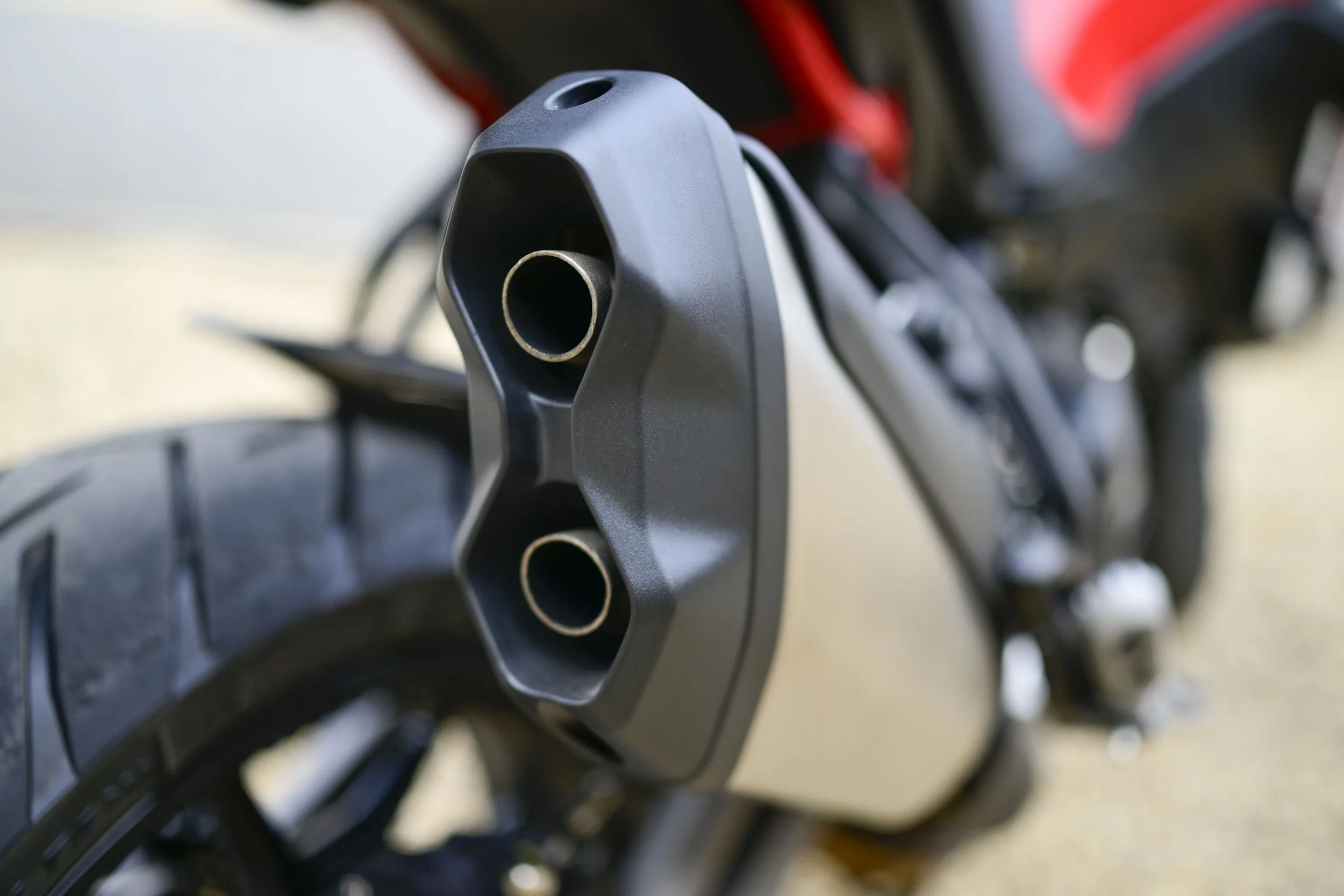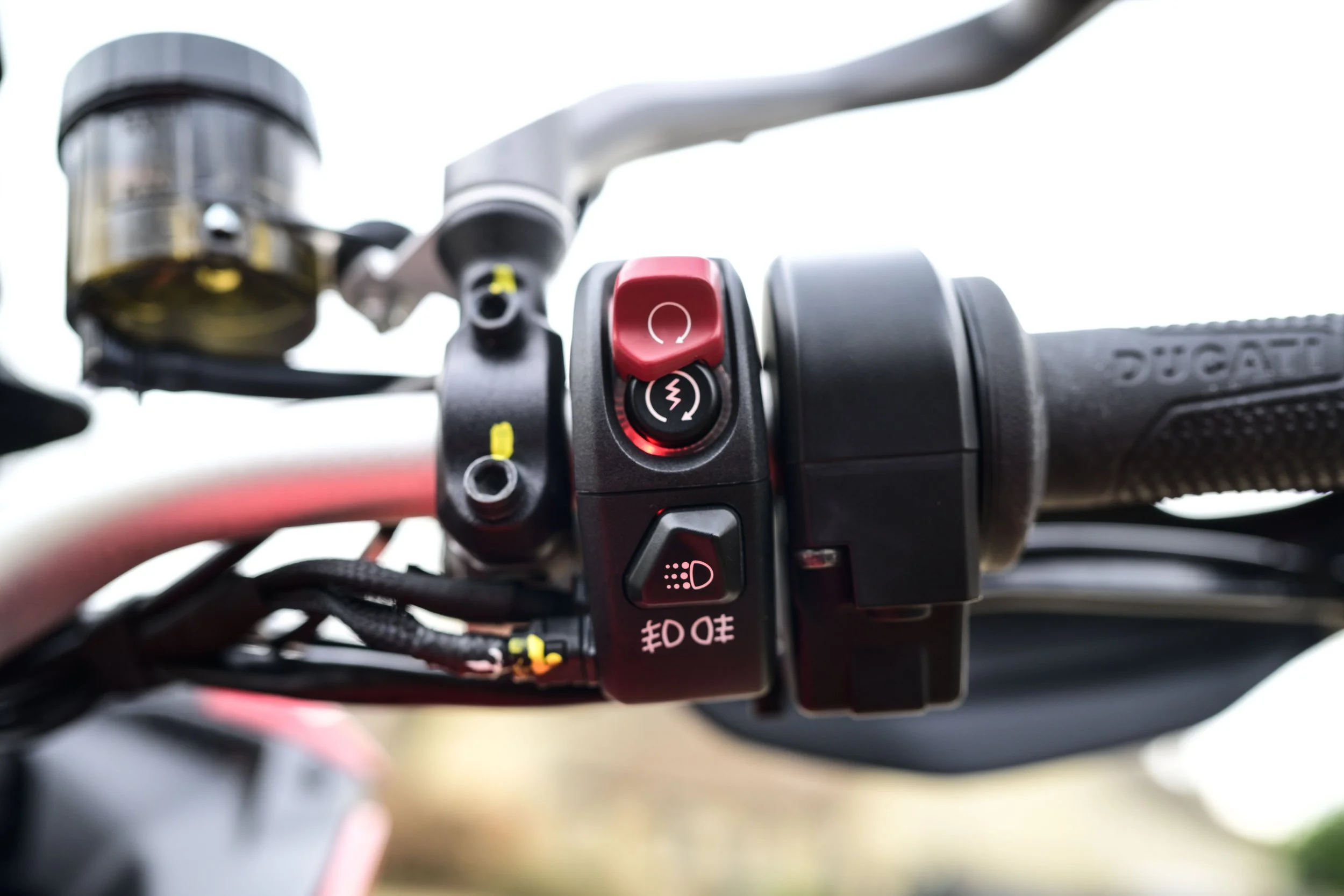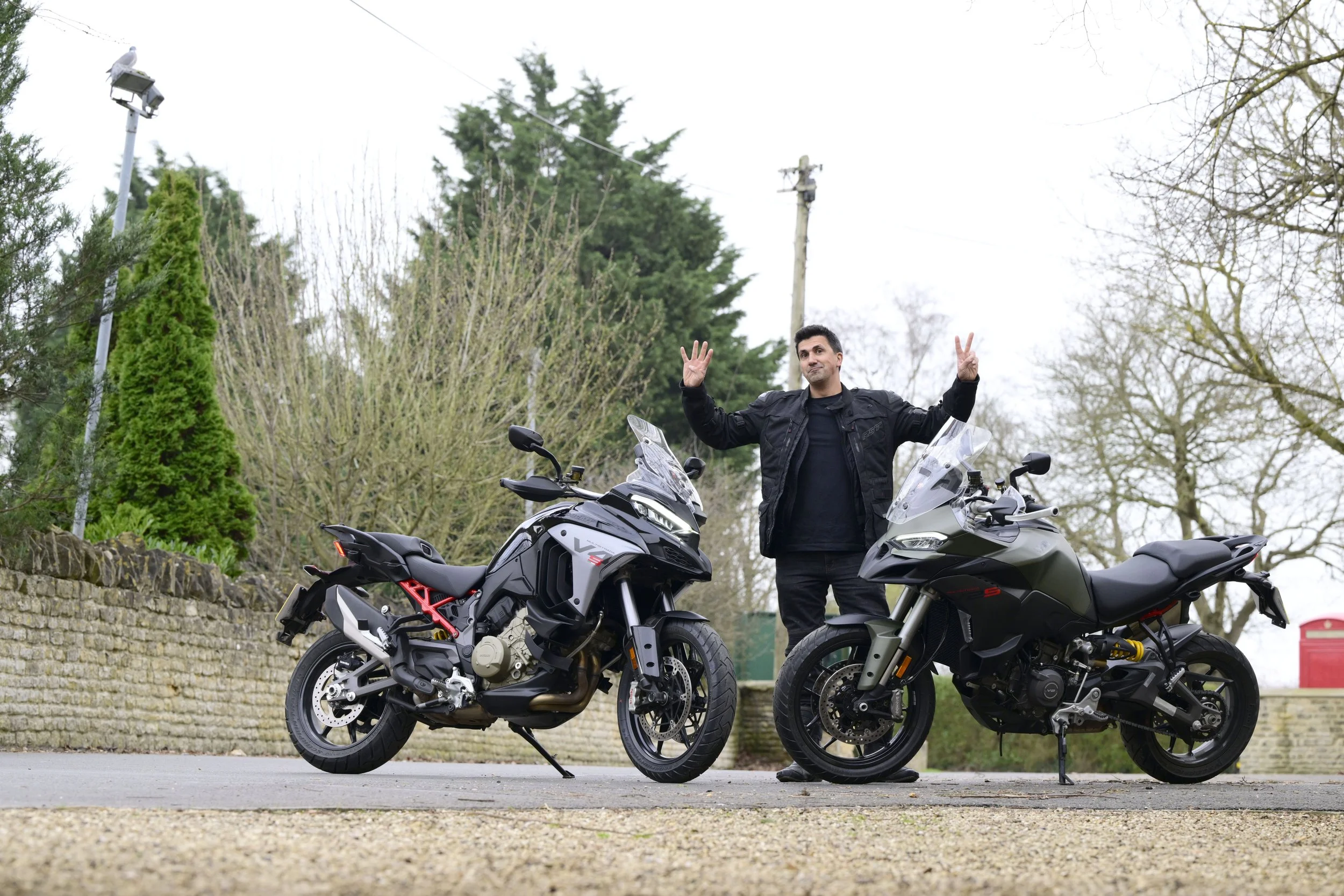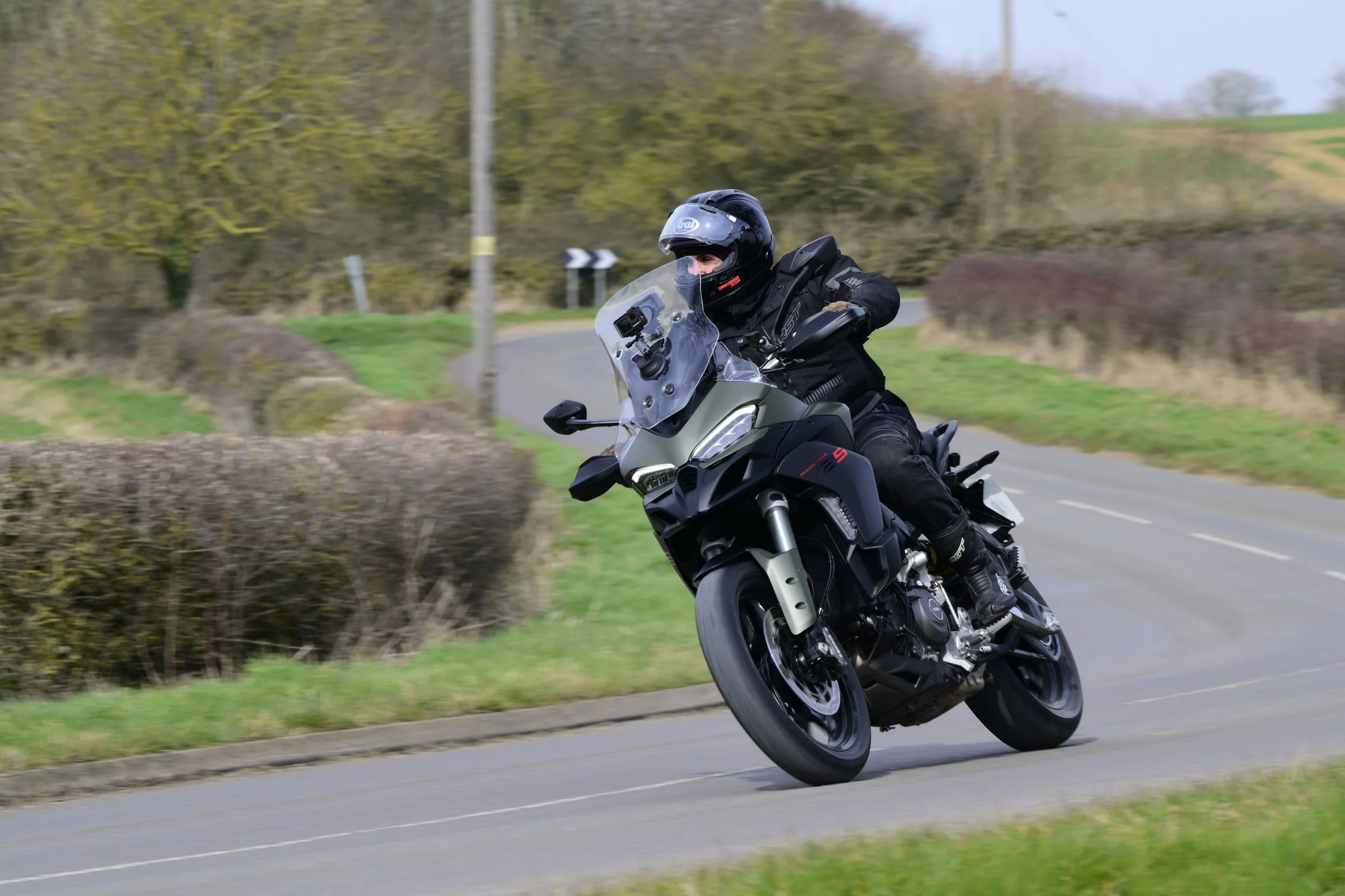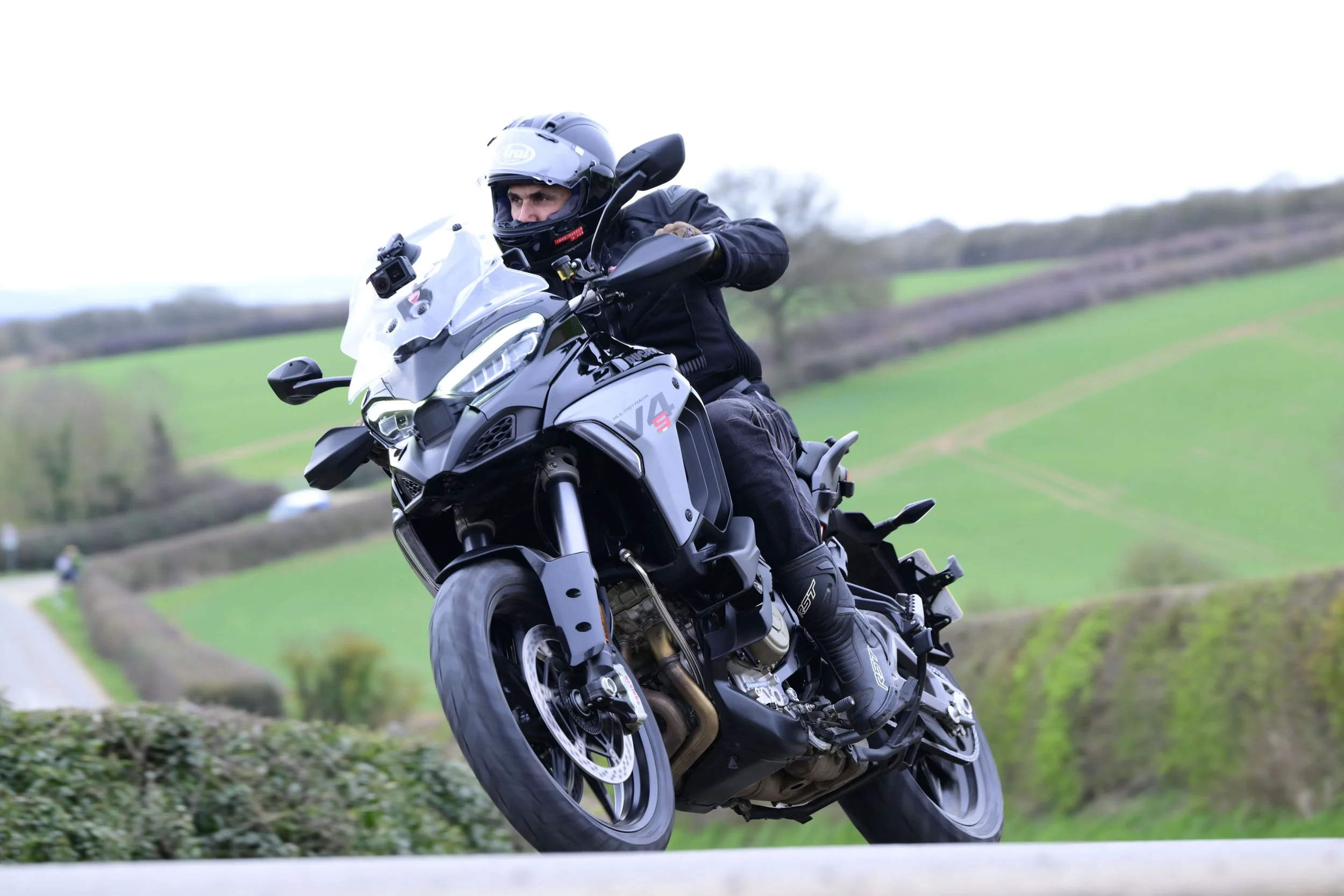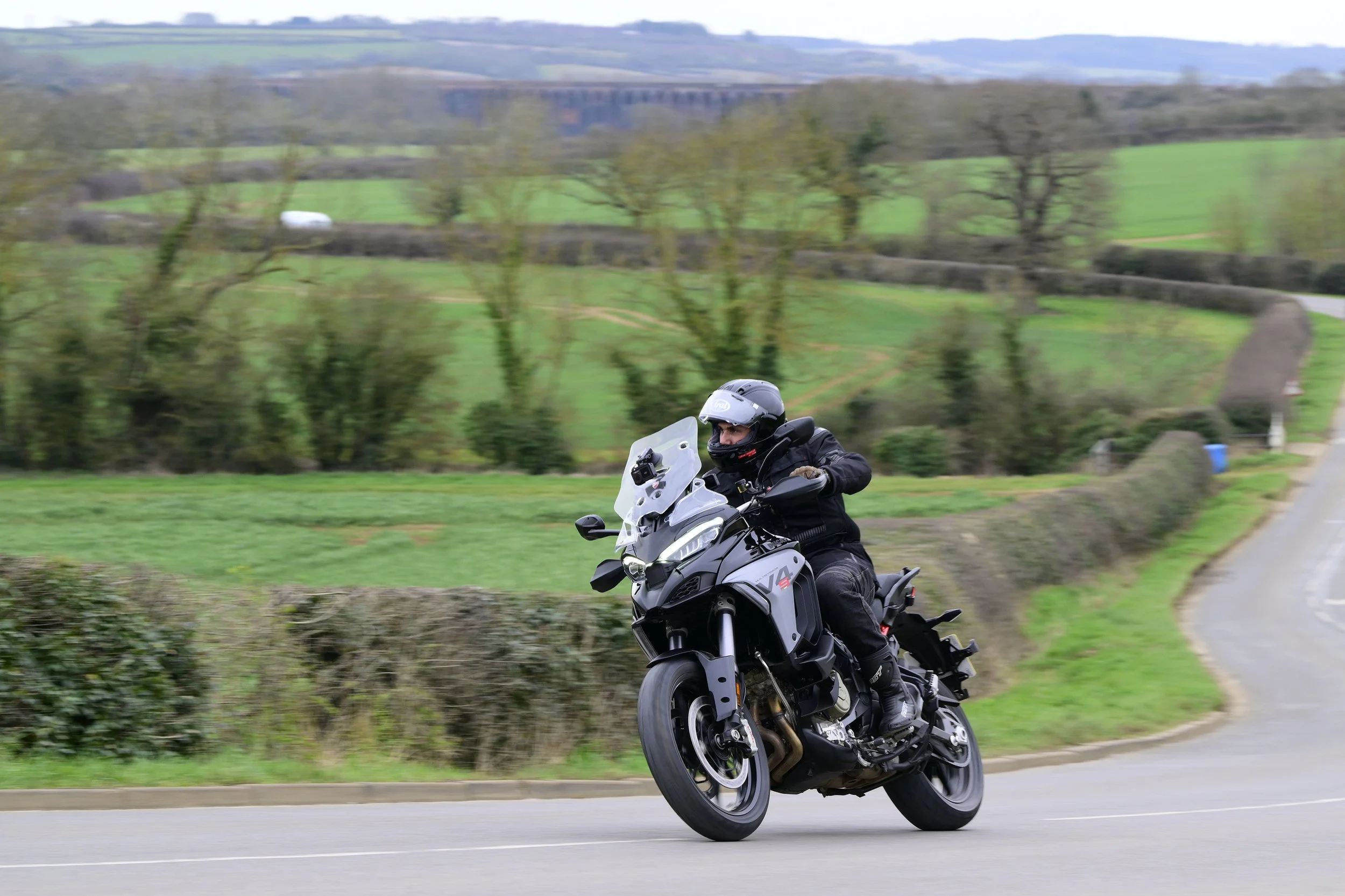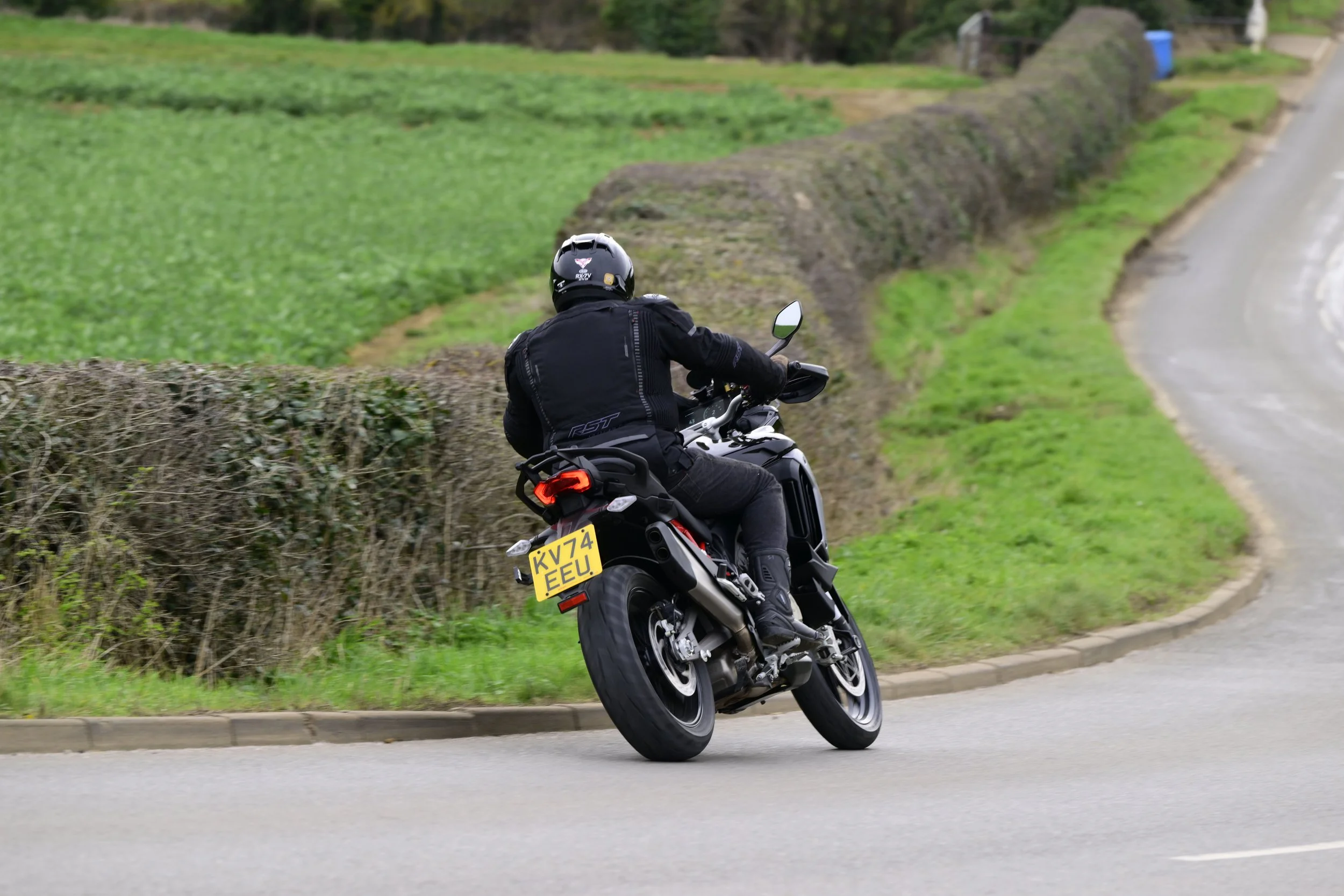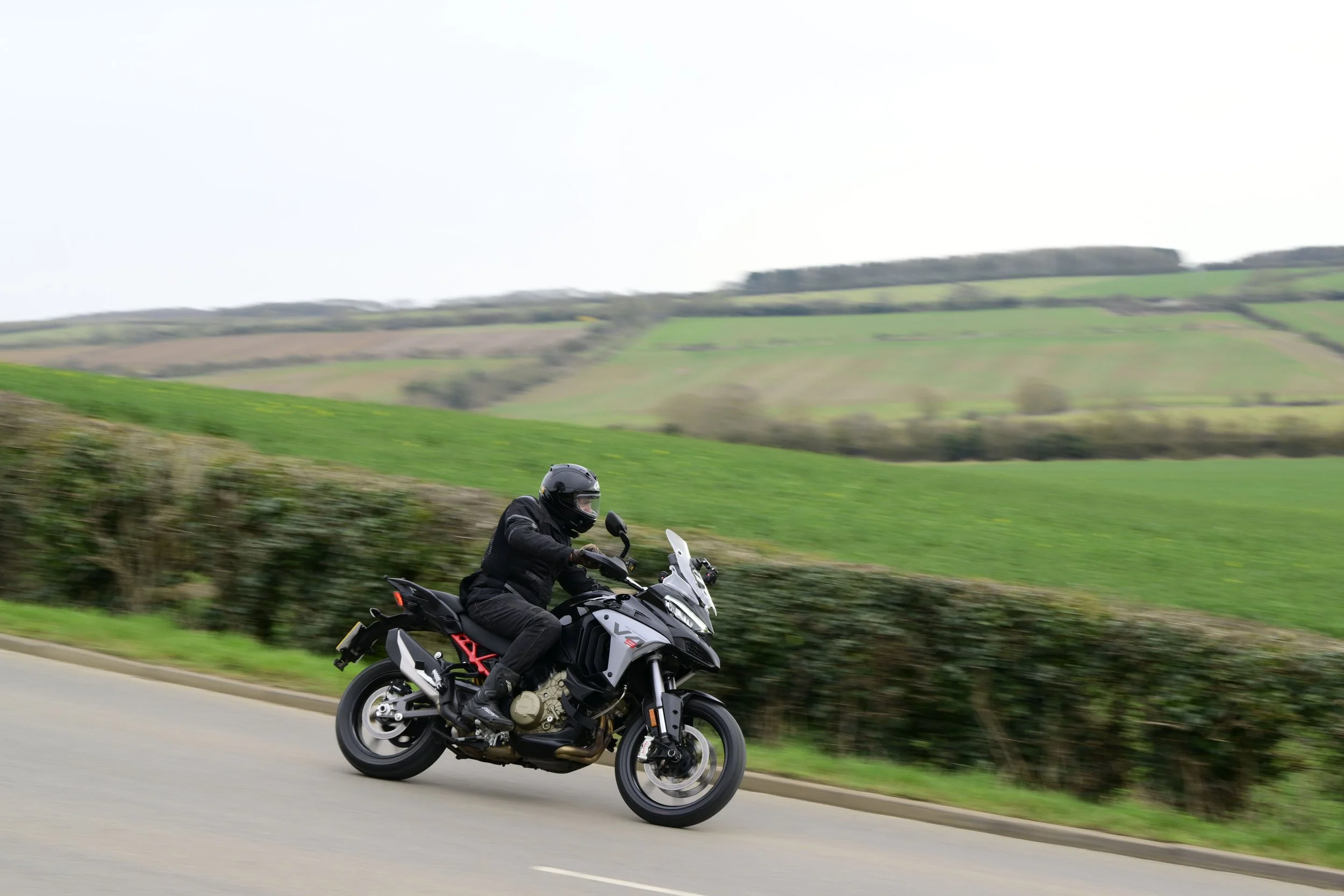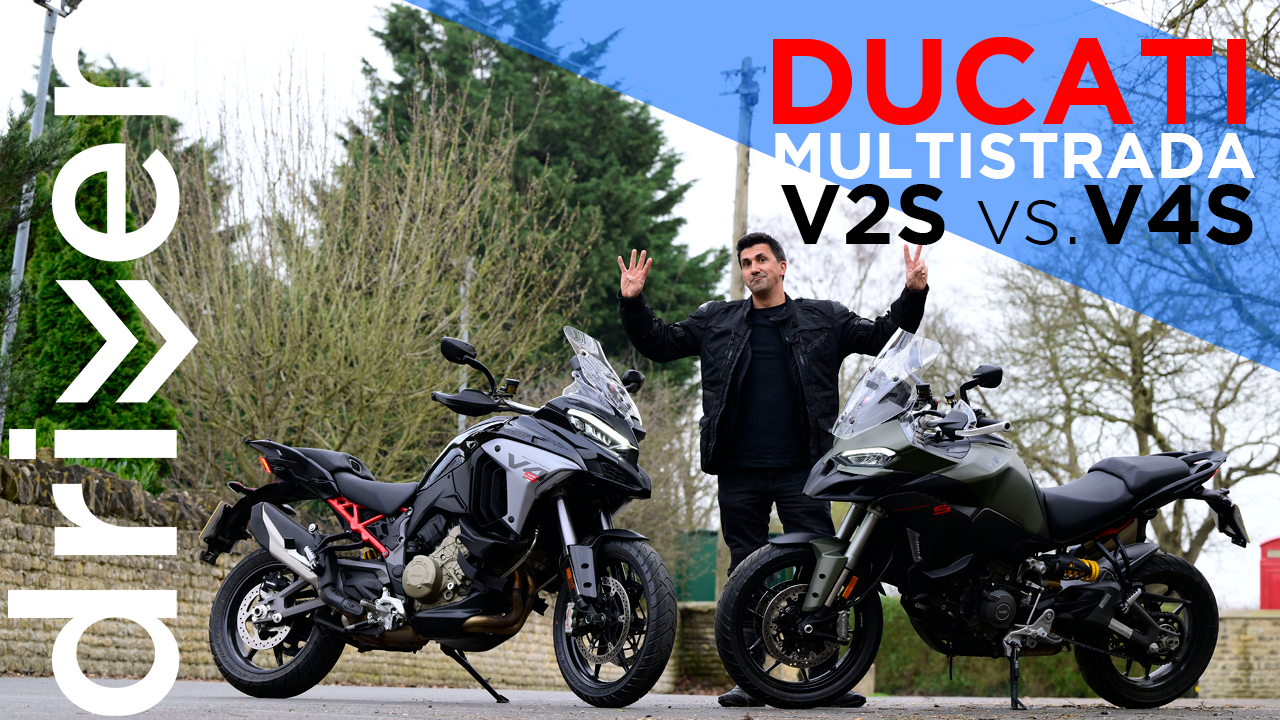REVIEW | Ducati Multistrada V2S and V4S
Last summer, in a moment of daft logic, I decided it would be a good idea to hop onto a 2024 Ducati Multistrada V4S and ride from London to Monmouthshire (Wales) and then onto Edinburgh... all in one day. The idea was to see if Ducati's iconic grand tourer was up to the challenge of getting me between the three locations for breakfast, lunch, and dinner on various roads in a relatively short space of time.
READ: https://driven.site/words/1300-miles-on-a-ducati-multistrada-v4s
Of course, like many of life's great ideas, the idea of the trip was far more enjoyable than the reality - my adventure started in torrential rain, which continued from central London, all along the M4 motorway and into Wales. I was then stuck battling traffic on the M6 en route to the north, and by the time I reached the Scottish borders, my gluteus Maximus felt a bit tender. As some might have already figured out, the wild one-day journey was only part of a much greater adventure, mainly because I don't live in or remotely close to any of the three trip locations. I live in leafy Warwickshire, so I had a solid 100-mile journey to my start point (the evening beforehand) and a substantial 326-mile commute home again the day after arriving in Edinburgh.
Upon reflection, yes, it was a daft idea, but at the expense of (please pardon the phrase) a sore arse, the Multistrada V4S proved to be one of the greatest motorcycles I'd been fortunate to ride up to that point.
For 2025, the Multistrada has had a refresh, and both the V2S and V4S have been tweaked and updated. Ducati invited me to enjoy a day with both models and some pre-planned riding routes around the counties of Northamptonshire, Rutland, and Leicestershire with a good ride on both... and, thankfully, a far less ambitious mileage.
V2S - What's new for 2025?
At a glance, there is a mixture of styling and tech upgrades for 2025 on the V2S, including a new suspension mode management system and a new minimum preload setting. There are updates to the lighting, such as a new 'evo' rear tail light and a 'coming home' feature on the headlights. In rider modes, in addition to the previously seen 'Sport', 'Touring', 'Urban' and 'Enduro', there is a new 'Wet' mode, which allows for greater stability through ABS and traction control presets in slippery conditions. There is also a new power mode for the Enduro setting designed to maximise power in off-road environments. The interface has also been refreshed with a new button navigation system for cycling through the rider modes and settings.
The new bike has also lost some weight; it's down 18kg from the previous model, which is substantial, thanks in part to some lighter-weight engine components. The refreshed V2S engine is a special powerplant. New Euro5 legislation has proven to be a challenge for Ducati, but there are clearly some exceptionally clever engineers in Bergamo who have not only managed to succeed in homologating the new unit to comply with the ever-changing rule book but also make it lighter and more powerful in the process.
Refreshed V2 Engine with new gearing
The new V2 has intake variable timing with hollow stem intake valves, which has helped increase the power to 113HP and 92Nm of peak torque. The torque is now also more readily available between 3,500 and 11,000 RPM. 1st and 2nd gear have also been shortened, allowing for faster acceleration from a standing start and more control for the brave folks who want to venture off-road.
2025 V2S Engine Stats
Displacement: 890 cc
Bore X stroke: 96 x 61,5 mm
Compression ratio: 13.1:1
Power: 85 kW (113hp) @ 10,750 rpm
Torque: 92,1 Nm (9,4 Kgm) @ 8,250 rpm
Valve clearance/adj interval: 30,000 km
_____________________________________________
V4S - What's new for 2025?
Like the V2S, the V4S has also had some updates and upgrades. The suspension system has some new trick parts and tech, including a new internal stroke sensor within the front forks, which sends a signal to the rear suspension to prepare for bumps and potholes, granting better rider comfort and stability, as well as a tweaked rear suspension preload, as seen on the V2, and a new double-sided aluminium swingarm. A new automatic rear suspension lowering system is now equipped to detect when the bike is coming to a stop, which lowers the rear suspension by a couple of cm to allow for better footing for riders with shorter legs. Once back up to speed, the system seamlessly adjusts to full height again.
Riding tech and interface systems have also been upgraded and refreshed with a new user interface on the TFT screen, a new power setting for off-road riding and a new 'wet' rider mode, just like on the new V2S.
Another new system is a front-to-rear braking system, which applies an element of braking in tandem to both wheels if only the front lever or rear foot pedal is pressed. The idea of the system is to stabilise the bike under urgent braking by minimising weight transfer from back to front.
Despite conforming to strict new Euro5 compliance regulations, the updated V4S still produces the same power as before.
2025 V2S Engine Stats
Displacement: 1,158 cc
Bore X stroke: 83 x 53,5 mm
Compression ratio: 14.0:1
Power: 125 kW (170hp) @ 10,750 rpm
Torque: 123,8 Nm (12,6 Kgm) @ 9,000 rpm
Valve clearance/adj interval: 60,000 km
Extended rear cylinder deactivation system
Price comparisons
The price differential between the two bikes is stark, with the V2S starting at £16,390 and the V4S at £21,495. The additional premium for the V4S is far beyond the extra two cylinders. Much of the technology equipped as standard on the V4, including the clever front-to-rear suspension system, advanced braking systems and upgraded interface (screen), is as yet unavailable on the V2.
As is the norm with Ducati, a list of upgrades and optional extras are available at an extra cost, and a comprehensive list of optional upgrades on the V2S can comfortably result in a retail price of over £27,000. If similar extravagance is added on to the V4S, then prices can shoot up to over £37,000
__________________
Riding the V2S
There is a rewarding, almost comforting familiarity in a V2-powered Ducati. The engine tone is purposeful from the minute the starter button is pressed, and once in gear and accelerating through the rev range, an orchestra of induction snarls and exhaust barks accompany the feeling of lightweight propulsion. Producing a big touring bike that weighs just 202kg is no mean feat, and the result of its lightweight mass can be felt in all aspects of the ride.
The V2S barks its way through the gears, which is helped considerably by the quick-shifter system, enabling you, as the rider, to click through the gears with pin-sharp precision. The system is smooth and exceptionally rewarding for up and downshifts.
My riding position at 6'1 / 186cm is near-perfect and encourages you, as the rider, to confidently lean into corners and power out onto straights.
The braking system is spot on, with both the front and rear brakes independently complementing each other and allowing for excellent cornering control. There is an array of electrical riding aids working hard behind the scenes, applying traction control, ABS and wheelie control at times when less experienced riders might get themselves into trouble. On my riding day with both bikes, whilst the road surface was dry, cold March nights had resulted in multiple layers of road salt being sprayed onto the surface, which could be unsettling to the traction at times. The onboard systems did the job with little to no interference to the ride.
The TFT interface is straightforward to grasp, and all the controls on the handlebars are comfortable and within reach for quick and easy adaptations.
I feel I always have some journalistic responsibility to find fault with everything I ride and drive, but the truth is, with the Multistrada V2S, I just can't. The power feels spot on, as do the brakes and suspension system. Within 30 minutes, I felt that I was entirely in tune with the V2S, and I had almost written off the requirements of the V4S before I had a chance to throw my leg over one. After a morning on the V2S, it is time to jump on the model's big sister and experience the refreshed V4S.
Riding the V4S
The engine's smoothness is the first thing that strikes you once on the V4S. A few blips of the throttle awaken all four cylinders, and a silky smooth yet purposeful zip is emitted. Once rolling, the smoothness of the V4 gives the impression of a quieter bike compared to the V2 up until the point of hard acceleration.
On the V2, the purposeful snarls and barks are always present; on the V4, they only make themselves known when it really matters. A firm twist of the throttle brings the V4 to life, and the sound is terrific. The audible reward of a Ducati V4 firing through its torque band is up there in the top tier of engine sounds. The V4S I was riding had the standard exhaust system; I can only imagine what the upgraded Termingoni system would be like.
Like on the V2S, the brakes and suspension system are faultless. They do what they're designed to do in a way that is seamless to the rider. The larger 6.5" TFT screen is visually more appealing than the smaller 5" screen on the V2S and is slightly easier for navigating through the menus and settings on the fly.
Another clever feature of the V4S is Cylinder Deactivation, which cuts fueling to the two rear cylinders when idling and accelerating slowly. The idea is to save fuel, but the reality of the saving will likely be small.
Optional V4S Packages
There are four package levels available to V4S buyers. Radar, 'Travel & Radar', 'Sport Travel & Radar' and 'Adventure Travel & Radar'. Each package offers more kit and tech as standard. The radar system allows for adaptive cruise control and rear blind spot detection, with flashing alerts delivered to the top of the wing mirrors. The most comprehensive package, 'Adventure Travel & Radar,' offers radar systems, heated seats for rider and passenger, a centre stand, heated grips, spoked wheels and aluminium side panniers (which I think look superb).
Regardless of the package selected, the V4S, with its sensational engine and technology, is an almost perfect motorcycle for virtually any rider, and I can't imagine very many people thinking otherwise, regardless of previous riding experience. As the saying goes, though, with great power comes great responsibility... and the 'but' for V4S comes as part of that exact topic.
Is the V4S too powerful?
When riding the Multistrada V4S on my UK adventure last summer, I had only good things to say about the engine and riding experience - but - there was a significant downside to 170hp on the road. To get what feels like 'the best' from the V4S, riding at the speed limit is virtually impossible. The reality is that the V4S is too powerful for its own good. While some undoubtedly will be sneering and rolling their eyes at my ludicrous complaint, the truth is, assuming you'll want to ride at the speed limits and keep yourself out of trouble day-to-day, you're only likely to be utilising a small percentage of what the V4S can offer. I'm ecstatic that the V4S exists, but I'll personally always struggle to justify the requirement for 170HP on an adventure bike.
So, which is best?
There will undoubtedly be some who will always want more, and that's the reason that the Multistrada V4S exists, but for me, the V2S takes the prize as the better bike overall.
My justification for this is down to usability vs price. For £16,390, the V2S offers all the power, excitement and practicality that any rider would need. A selection of optional extras will likely keep that retail price below £20k - a price I think is pretty good for a bike that can do it all.
The V4S with the Adventure Travel & Radar Pack will cost £25,625 before a single optional extra is ticked, meaning buyers will likely be spending a whopping £10k more for a bike that's only likely to see 50% of its potential on the road.
Perhaps the story would be different if I were comparing Panigale V2S and V4S as I'd be far more excited about the prospect of taking my V4S Panigale to a track day at the weekend and getting more from it, but neither I nor the vast majority of Multistrada buyers is likely to even consider getting their knee down on a Multi, and that's what seals the deal for me.
Save the cash, get the V2S and enjoy multi-purpose motorcycling perfection.
words by John Marcar
photography by Potski Media and Ducati UK

